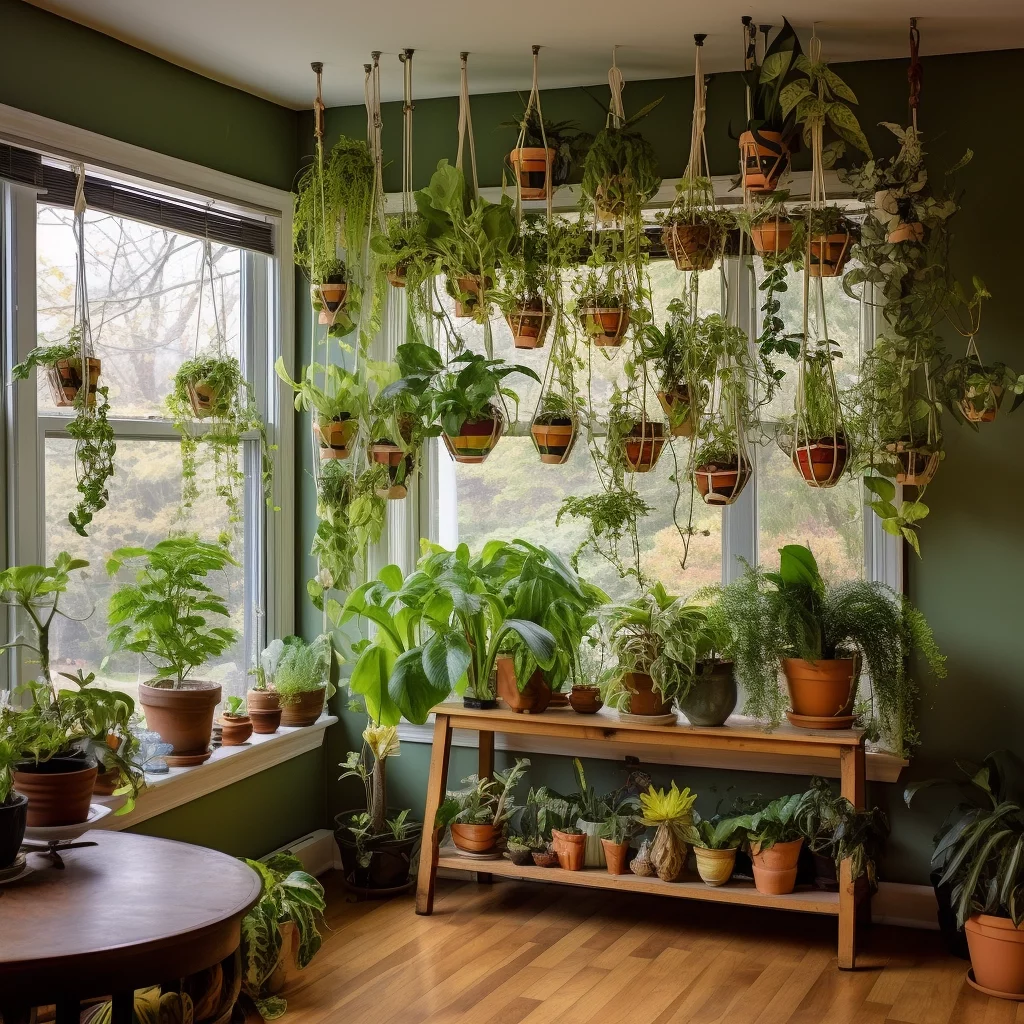Houseplants have soared in popularity, transforming our living spaces into lush, green oases. Among these, climbing house plants hold a special place, offering a unique blend of natural beauty and versatility. In this comprehensive guide, we delve into the world of climbing house plants, exploring their benefits, care tips, and the best varieties to add a touch of nature’s magic to your home.

Why Choose Climbing House Plants? 🤔
Versatile and Space-Saving: Climbers can grow vertically, unlike traditional potted plants, making them ideal for small spaces.
Air Purification: Many climbing plants purify the air, creating a healthier and more refreshing home environment.
Aesthetic Appeal: Climbing plants, with their cascading vines and lush foliage, bring a unique visual interest and can become a focal point in home decor.
Best Climbing Plants for Your Home 🌱
- Pothos (Epipremnum aureum): This hardy plant is ideal for beginners, thriving in a variety of light conditions and requiring minimal care.
- Philodendron: Known for its heart-shaped leaves, the Philodendron is both beautiful and easy to maintain.
- English Ivy (Hedera helix): A classic choice, English Ivy is renowned for its elegant foliage and air-purifying qualities.
- Monstera Deliciosa: Famous for its unique, split leaves, the Monstera is a trendy addition to any interior.
- Jasmine (Jasminum spp.): Not only does Jasmine add greenery, but it also offers sweetly scented blossoms.
Caring for Your Climbing Plants 🌤️💧
- Lighting Needs: Most climbing plants prefer bright, indirect light. A spot near a window with a sheer curtain is often ideal.
- Watering Routine: Overwatering is a common issue. Ensure the soil is dry to the touch before watering again.
- Feeding and Nutrition: During growing seasons (spring and summer), feed your climbers with a balanced, water-soluble fertilizer once a month.
- Pruning and Training: Regular pruning promotes healthy growth. Use stakes or trellises to guide the plant in your desired direction.
DIY Ideas for Displaying Climbing Plants 🛠️
- Wall Trellises: Create a living wall by installing trellises and guiding your climbers along them.
- Hanging Baskets: Perfect for plants like Pothos and Philodendron, which can create a stunning cascade effect.
- Shelf Edges: Let your climbers drape naturally over the edges of shelves for a bohemian look.
Common Problems and Solutions 🚫🌿
- Pest Infestations: Keep an eye out for common pests like aphids and spider mites. Neem oil can be an effective treatment.
- Yellowing Leaves: This could indicate overwatering or poor drainage. Check your plant’s water needs and pot setup.
- Lack of Growth: Insufficient light or nutrients might be the cause. Consider relocating your plant or adjusting its feeding schedule.
Climbing Plants and Pet Safety 🐾
Many popular climbers like Pothos and Philodendron are toxic to pets if ingested. Always check the safety of a plant before bringing it into a home with furry friends.
FAQ
1. What are the best climbing indoor plants?
- Pothos (Epipremnum aureum): Renowned for its hardiness and versatility, Pothos can thrive in various light conditions and is easy to care for.
- Philodendron: Both the heartleaf and the split-leaf varieties are popular for their fast-growing, trailing vines and ease of care.
- Ivy (Hedera helix): A classic climber, Ivy is loved for its lush foliage and adaptability to indoor environments, though it prefers bright, indirect light.
- String of Hearts (Ceropegia woodii): This plant features charming heart-shaped leaves and delicate, trailing vines. It requires bright, indirect light and minimal watering.
- Monstera Deliciosa: Known for its striking split leaves, Monstera is a fast grower and can thrive in moderate to bright light.
2. What is the easiest climbing plant to grow?
- Pothos stands out as the easiest climbing plant to grow indoors. It’s highly adaptable to a range of light conditions, from low to bright, indirect light, and doesn’t require frequent watering. Its vines can be trained to climb or allowed to trail, making it versatile for interior decorating.
3. What are indoor climbing plants with flowers?
- Hoya (Wax Plant): Known for its waxy leaves and fragrant, star-shaped flowers, Hoyas are excellent climbers or trailers.
- Passionflower (Passiflora): While more challenging, some species like Passiflora caerulea can be grown indoors, offering stunning, exotic flowers.
- Jasmine: Certain varieties like Jasminum polyanthum are suited for indoor growth and can produce beautifully scented flowers when provided with enough light.
4. What is the best climbing plant for low light indoors?
- Devil’s Ivy (Pothos): Exceptionally tolerant of low light conditions, Pothos is the top choice for areas with limited natural light. Its growth may slow in low light, but it will still survive and maintain healthy foliage.
Climbing house plants are a fantastic method to introduce nature into our homes. Not only do they beautify our living spaces, but they also create healthier environments and become a source of joy and tranquility. Whether you’re an experienced plant parent or just starting, these magnificent climbers are bound to add a special touch to your indoor oasis.

